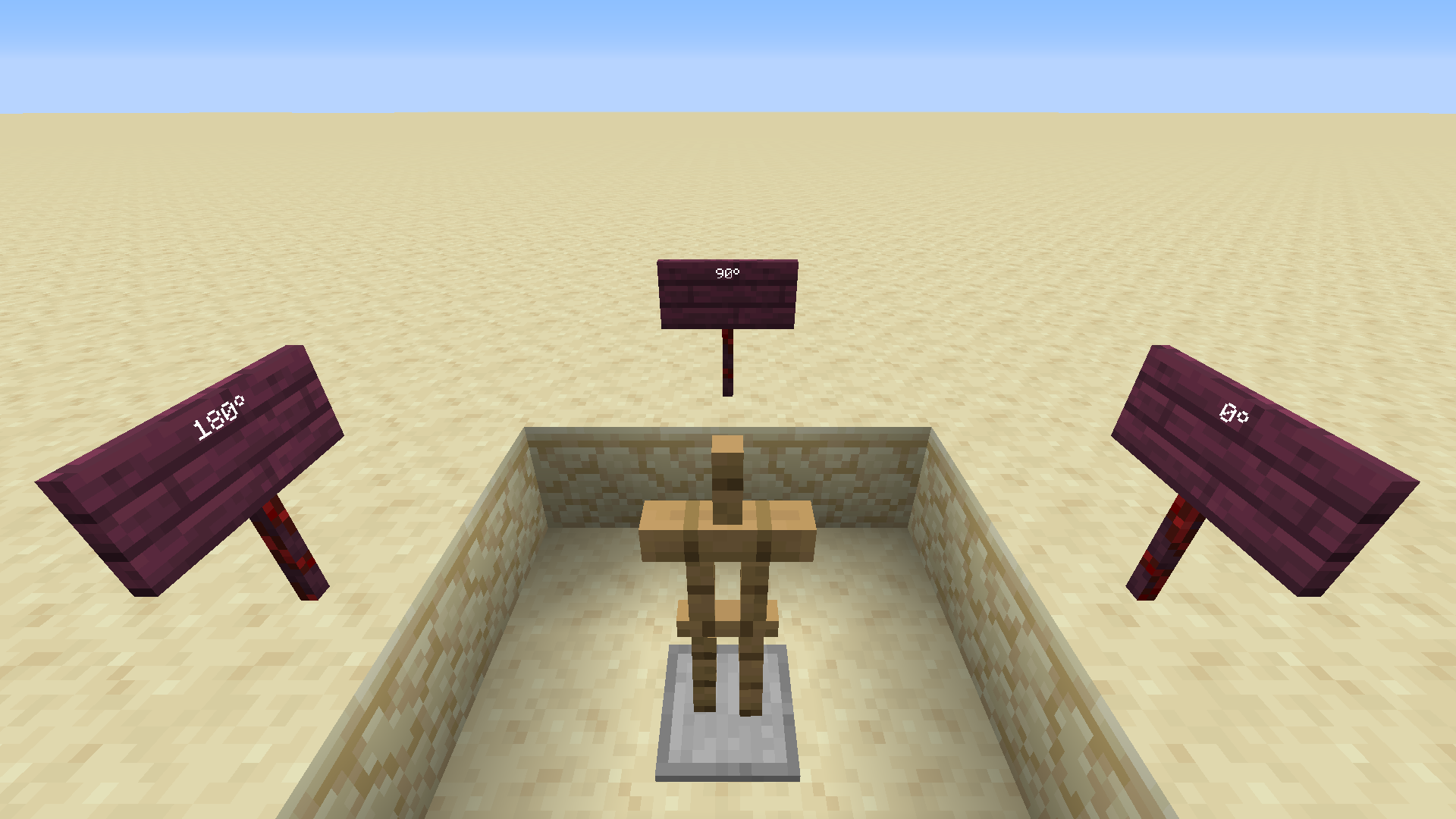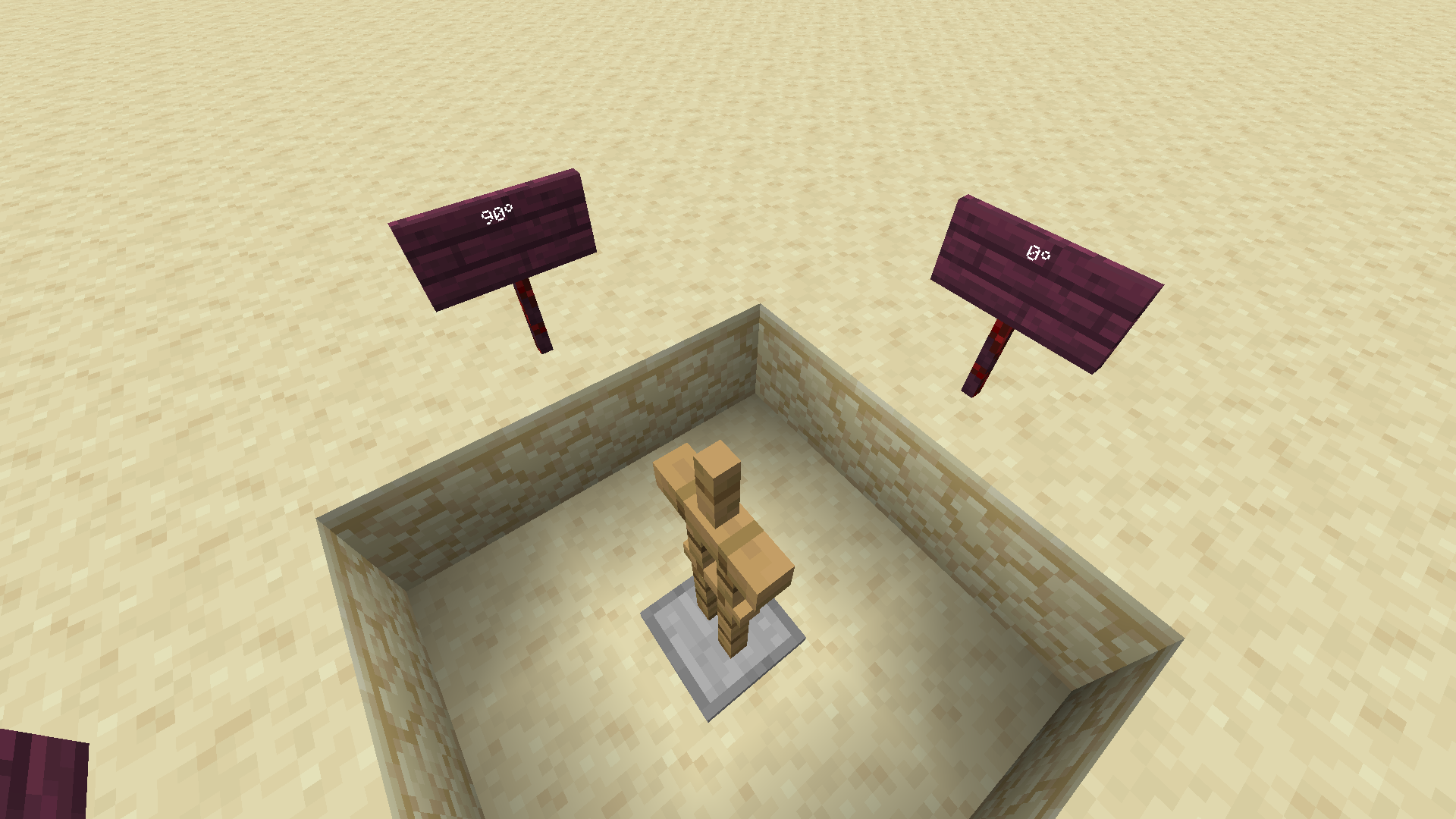NBTs
General Syntax
In Sandstone, NBTs are regular JavaScript objects. JavaScript objects are very close to NBTs: they have arrays, objects, keys and values, numbers and strings.
For example, to summon an invisible armor stand with the "hello" tag and a pumpkin on his head, you would do the following command:
summon('minecraft:armor_stand', rel(0, 0, 0), {
Invisible: 1,
Tags: ['hello'],
ArmorItems: [
{}, {}, {}, { id: 'minecraft:carved_pumpkin', Count: 1 },
]
})
Units
Usefulness
Despite JavaScript objects and NBTs being close, there is one thing missing from JavaScript objects that is required in NBTs: specifying units.
For example, to summon an armor stand with a given rotation, you need to specify that the values are floats.
With this command, you get the expected result:
/summon minecraft:armor_stand ~ ~ ~ {Rotation: [90.0f, 0.0f]}

Omit the unit, and the armor stand rotation will be wrong:
/summon minecraft:armor_stand ~ ~ ~ {Rotation: [90.0, 0.0]}

Here, specifying that the values are floats is mandatory. However, this isn't possible to do it with a normal JavaScript object.
Unit Syntax
To specify a unit, you must call the corresponding method under the NBT object. For all units, there are 2 possible calls:
- With a single number. It will add the given unit to the number.
- With an array of numbers. It will add the given unit to all numbers in the array.
For example, to summon an armor stand with Invisible: 1b and Rotation: [90f, 0f], you must write:
import { NBT } from 'sandstone'
summon('minecraft:armor_stand', rel(0, 0, 0), {
Invisible: NBT.byte(1), // => Invisible: 1b
Rotation: NBT.float([90, 0]), // => Rotation: [90f, 0f]
})
All units
Here is a summary of all units and their corresponding methods.
| type | unit | method |
|---|---|---|
| float | 'f' | NBT.float |
| double | 'd' | NBT.double |
| byte | 'b' | NBT.byte |
| short | 's' | NBT.short |
| long | 'l' | NBT.long |
| int array | 'I;' | NBT.integerArray |
| long array | 'L;' | NBT.longArray |
Integer array and Long array are different from arrays of integers and arrays of longs. These types were added recently, and are use in a few specific places. They are represented this way:
{ Test: [I; 0, 1, 2 ] } # Integer array
{ Test: [L; 0, 1, 2 ] } # Long array
Integer arrays are used in custom player heads IDs, and in several Villager NBTs storing locations.
Long arrays are used to store chunk data.
Unit-free Syntax
Another syntax exists. It's more compact, easier to read, but has absolutely no type safety and no validation. It uses the template string syntax:
import { NBT } from 'sandstone'
summon('minecraft:armor_stand', rel(0, 0, 0), {
Invisible: NBT`1b`, // => Invisible: 1b
Rotation: NBT`[90f, 0f]`, // => Rotation: [90f, 0f]
})
// => /summon minecraft:armor_stand ~ ~ ~ {Invisible:1b, Rotation:[90f, 0f]}
Please note than no validation is performed. For example, missing a bracket will result in an invalid command.
summon('minecraft:armor_stand', rel(0, 0, 0), {
Rotation: NBT`[90f, 0f`, // Notice the missing square bracket
})
The above snippet results in the following invalid command:
summon minecraft:armor_stand ~ ~ ~ {Rotation:[90f, 0f}